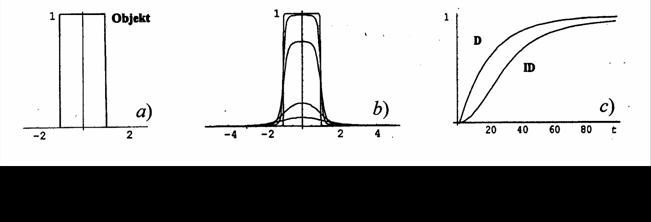PC 04
POLYMER HOLOGRAPHY - NEW THEORY OF IMAGE GROWTH
A. Havráneka, M. Květoňb
aCharles University, Faculty of Mathematics and Physics, Department of Macromolecular Physics, V Holešovičkách 2, 180 00 Praha 8 , Czech Republic, (havranek@kmf.troja.mff.cuni.cz)
bCzech Technical University in Prague, Faculty of Nuclear Sciences and Physical Engineering, Department of Physical Electronics, Břehová 7, 115 19 Praha 1, Czech Republic


We have thoroughly measured the image forming in photopolymer holographic films [1]. If the exposition parameters were well established, the time dependence of the image growth (the grow-curve) has the form similar to that of ID-curve in Fig. c). The existing theories of photopolymeric hologram growth (D-theories) come out only from the diffusion concept. As diffusion growth is generally described by the 1-e-t/t type curve (D-curve of Fig. c)), these theories have some problems in describing the increasing rate of image growth in the early (short times t ) stages of the measured grow-curve. To overcome this disadvantage we add to the theory the idea that polymer loses its mobility during its growth and put down the more general concept which we call the immobilization-diffusion theory (ID-theory) [2]. Using this theory the description of the S-type form of the ID grow-curve (Fig c)) is inherent.
In our poster we shall try to explain the ideas of the theory. We shall also put down some examples of its use. It looks promisingly that the method may be used inversely to analyze the kinetics of polymer growth. Also this aspect will be dealt in more detail.
[1] M. Květoň et al., Polymer holography I, Pol. Bull. 58, 253-259 (2007)
[2] A. Havránek et al., Polymer holography II, Pol. Bull. 58, 261-269 (2007)